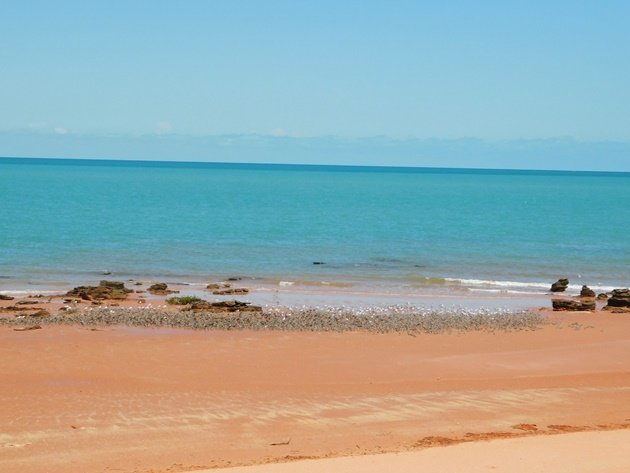
Last week I told you about the resident shorebirds that are very good at social distancing. This week I will introduce you to the shorebirds that choose not to distance themselves from each other on our local beaches. These migratory shorebirds crowd together for protection when they roost at high tide. Safety in numbers! The flocks are getting smaller day by day as they migrate to the northern hemisphere to breed. The shorebirds will then spread out across the tundra to breed and they will no longer be close to each other.
The shorebirds have been feeding up and changing into their breeding plumage. Although their colouration makes them stand out a lot more here now it will be the perfect camouflage on their breeding grounds. We are very fortunate here in Broome to have so many of the shorebird species represented on the beaches of Roebuck Bay. In the photos below you can hopefully identify Eastern Curlew, Black-tailed Godwit, Bar-tailed Godwit, Great Knot, Red Knot, Greater Sand Plover, Lesser Sand Plover, Ruddy Turnstone, Grey-tailed Tattler, Terek Sandpiper and Crested Terns. Other smaller species are trickier to observe when the beach is crowded, but you should look out for Curlew Sandpipers, Broad-billed Sandpipers and Red-necked Stint. It is the right time of year to easily identify the Great Knot from the Red Knot, because the Red Knot are now red. The Black-tailed Godwit are showing a rusty red colour now too.
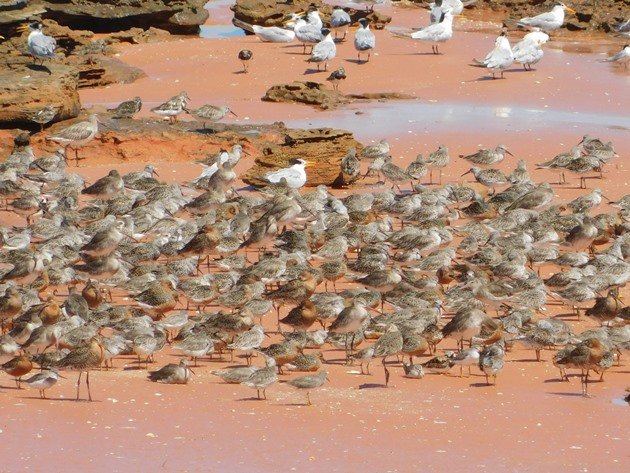
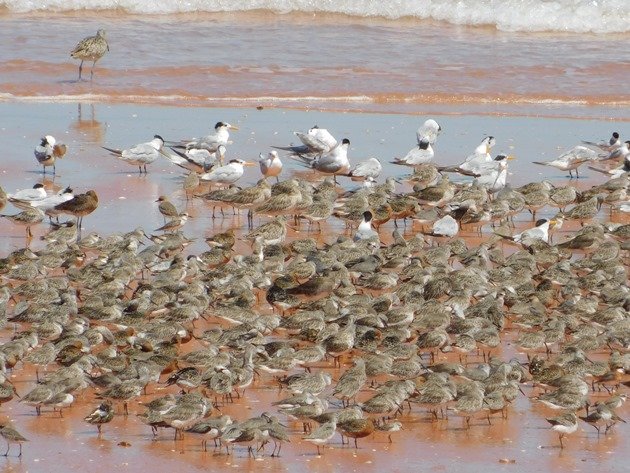
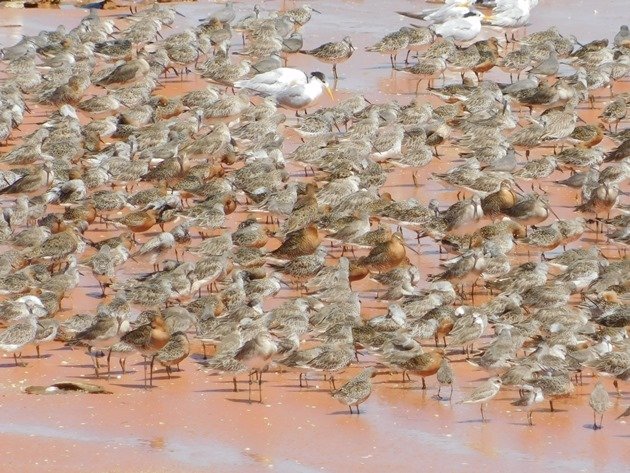
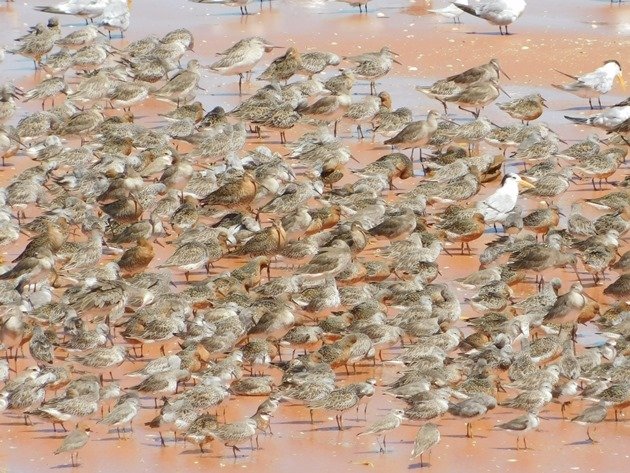
Crowding shorebirds
The main disturbance at the moment along the beaches is birds of prey. These include Black Kites, Whistling Kites, Brown Falcons, Brahminy Kites and White-bellied Sea Eagles. With all of the travel restrictions in Australia there are very few people moving around the continent. Western Australia has some of the strictest travel restrictions. We are not even allowed to move around our own state and in the Kimberley we cannot move beyond our own Shire. Until this week we were not even allowed to go hiking. We could walk along the beach for exercise, because there are so few people here and the beach offers many kilometres of sand and you can easily space yourselves out. The beaches that the shorebirds roost on are mainly used by fishermen or bird observers.
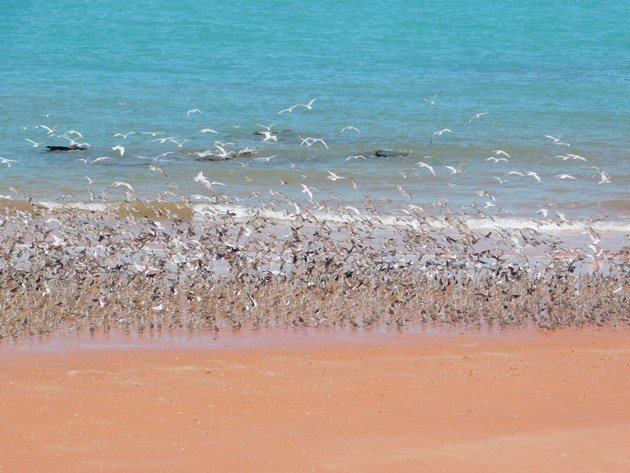
Terns are usually the first to take off when disturbed
Over the next few weeks the last of the migratory shorebirds will head north. The resident shorebirds will start to breed. The beaches are likely to remain emptier than any other year if the travel restrictions are not lifted. It is a strange environment to not have the arrival of people from the south chasing warmer weather this year. The only crowding on our beaches at the moment is the shorebirds! That’s not a bad thing!













Leave a Comment